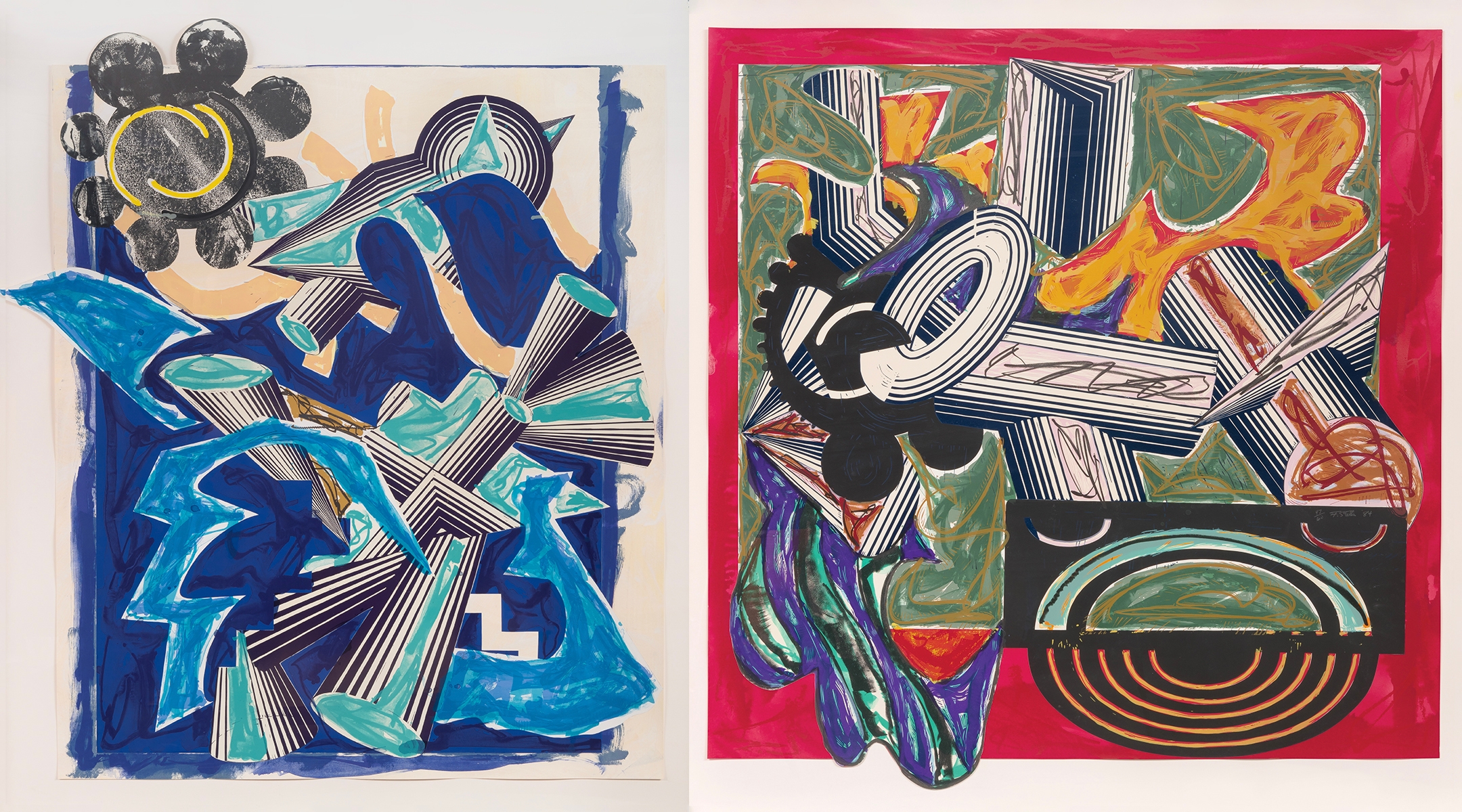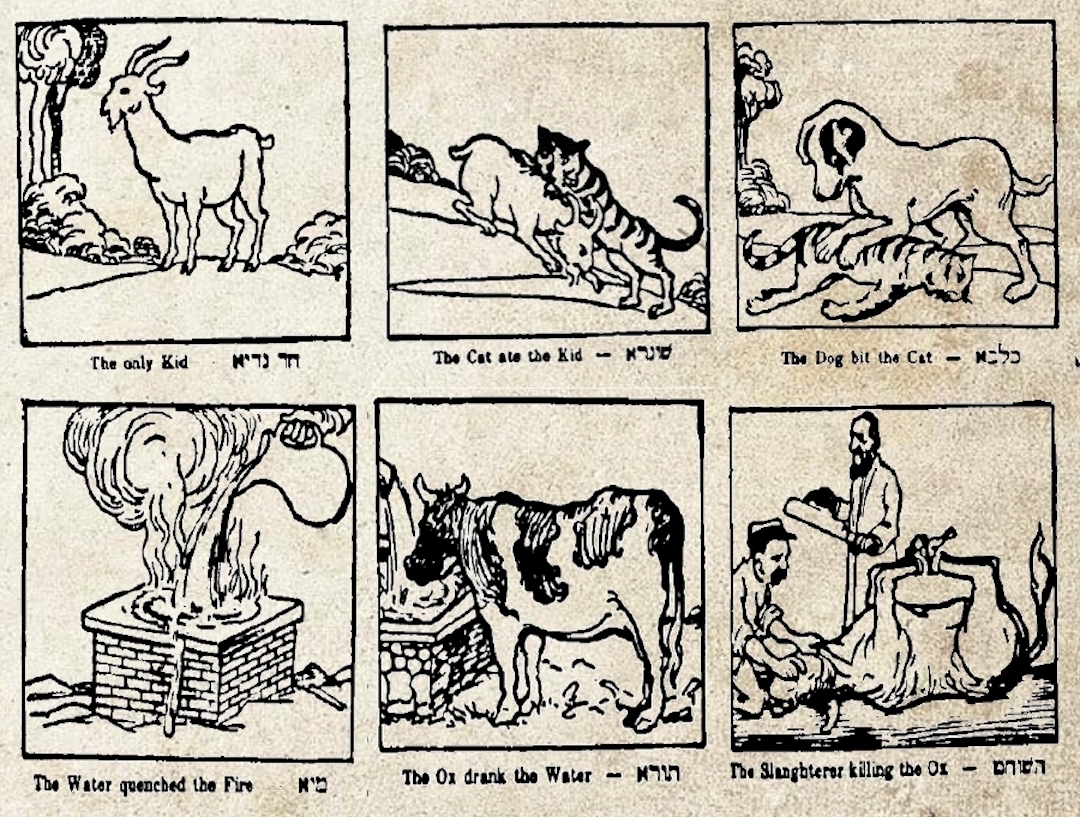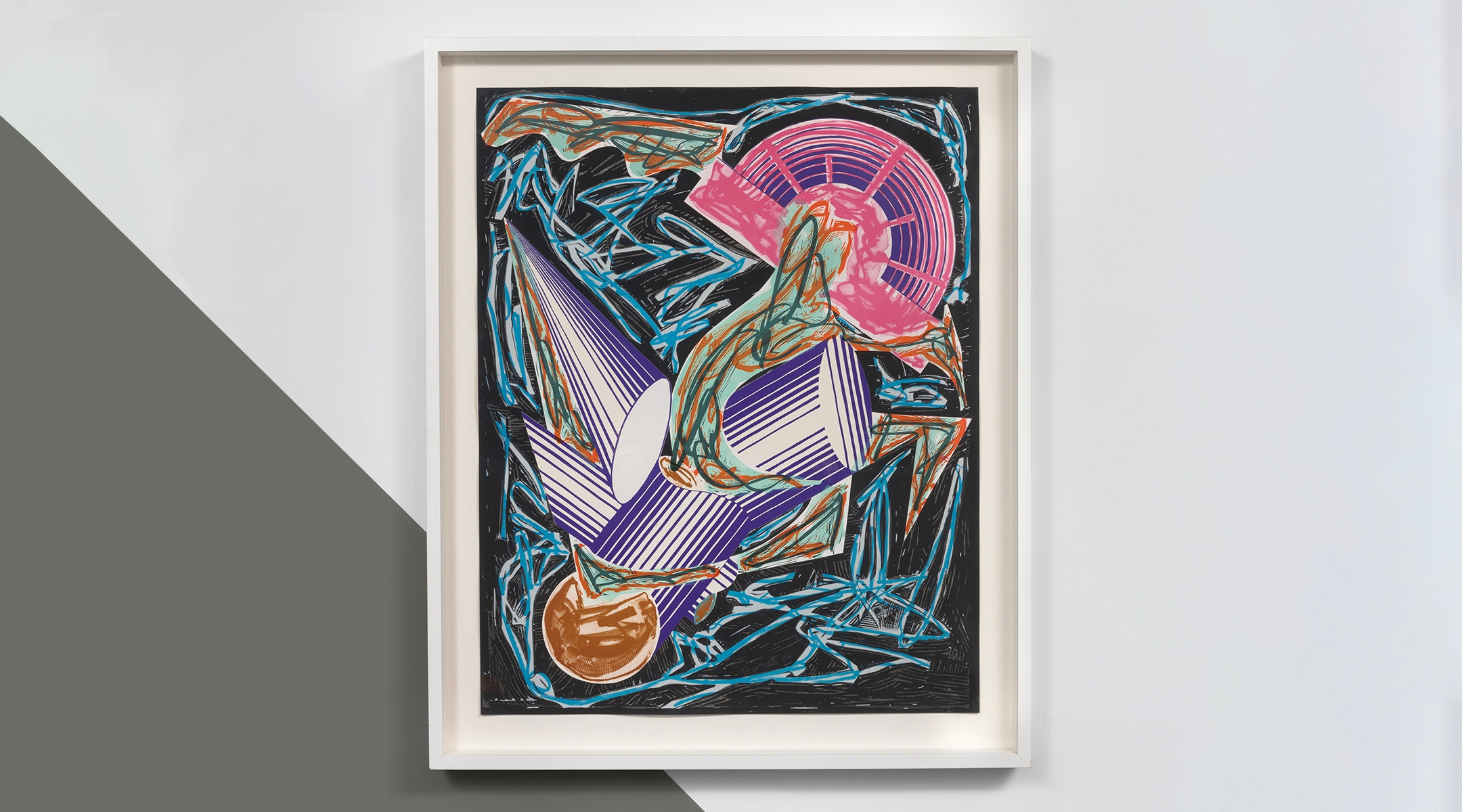(New York Jewish Week) — “Had Gadya,” the playful song about a destructive chain of events starting with one little goat, may be best-known for rousing sleepy children at the end of a long Passover seder.
But it is also the basis for a series by Frank Stella, the 87-year-old Catholic American artist credited with catalyzing the Minimalist movement of the 1960s. His 12 vibrant, abstract “Had Gadya” prints, completed between 1982 and 1984, are now on display at the Dr. Bernard Heller Museum in New York City.
The works were loaned by collector Elissa Oshinsky for a tour of the Los Angeles, Cincinnati and New York campuses of Hebrew Union College-Jewish Institute of Religion (HUC-JIR). The Heller Museum at HUC-JIR celebrated its exhibition opening on Sept. 7 and will host it until Feb. 29.
“Had Gadya” is one of the earliest children’s songs in recorded history, dating back to a 14th-century prayer book from Provence. It appeared in a manuscript attached to the Prague Haggadah of 1526, then in print for the first time in the Prague Haggadah of 1590.
Each of Stella’s prints follows a stanza of the song, which details a series of disasters in the style of a cumulative nursery rhyme. A father buys a little goat, which is eaten by a cat. The cat is bitten by a dog, the dog beaten by a stick, the stick burned by a fire, the fire quenched by water, the water drunk by an ox, the ox slaughtered by a butcher, the butcher killed by the Angel of Death — who is finally slain by “the Holy One, Blessed be He.”
In Stella’s abstract rendition of “Had Gadya,” this narrative is driven by dynamic, repeated shapes and colors, said Jean Bloch Rosensaft, the director of the Heller Museum.
“The repetition of different forms, from piece to piece, creates a kind of continuity, telling that lyrical story of successive acts of victimization that are ultimately resolved by God to bring peace and order to the world,” Rosensaft told the New York Jewish Week.
Stella, 87, who was not available for an interview, took inspiration from a 1919 series of “Had Gadya” illustrations by the Russian-Jewish avant-garde artist El Lissitzky. The museum exhibit shows Lissitzky’s lithographs, full of Yiddish typography and shtetl settings, next to Stella’s versions.

From left: Frank Stella, “Had Gadya: Back Cover,” 1984 and “Had Gadya: Then came a dog and bit the cat,” 1984. Collection of Elissa Oshinsky. (©2023 Frank Stella/Artists Rights Society [ARS], New York)
Stella first saw Lissitzky’s illustrations while visiting the Tel Aviv Museum in 1981. Marc Scheps, then-director of the museum, recalled in a 1986 exhibition catalog that the artist stood in front of Lisskitzky’s pieces and said, “maybe I’ll do something about these.” The famously terse artist was known for heralding Minimalism with his remark,“what you see is what you see.”
Although Stella is a Catholic Italian-American who grew up in Massachusetts, European Jewish themes are prominent in his work. As a breakthrough artist in his early 20s, he gave his 1958-59 black pinstripe paintings the titles “Arbeit Macht Frei” (“Work Sets You Free,” the slogan on the entrance gate to Auschwitz); “Reichstag” (the German parliament building that burned in 1933 as the Nazis consolidated their dictatorship), and “Die Fahne Hoch” (“The Flag High,” the first words of the Nazi Party anthem).
In 1960, his painting “The Final Solution” depicted an equilateral cruciform — a Catholic symbol of martyrdom, as well as a shape that Stella called a “truncated swastika.” Later, during a lengthy hospitalization in the 1970s, he produced thousands of drawings and 130 mixed-media paintings inspired by photographs of Polish wooden synagogues that were built in the 17th-19th centuries and destroyed in the Holocaust. He titled the paintings after the burned synagogues’ lost communities, saying that he wanted to commemorate “the obliteration of a culture.”
Stella was a child when the United States went to war with the Nazis, an enemy whose visual impact stayed with him. His artistic eye developed during trips to the movies, which frequently showed newsreels of Nazi rallies and marching soldiers. In the 1976 catalog for “Frank Stella: The Black Paintings,” his exhibition at the Baltimore Museum of Art, he said that the painting “Die Fahne Hoch” — which comprises black bands of paint crossing narrow, bare spaces of canvas — reminded him of a waving flag.
“The thing that stuck in my mind was the Nazi newsreels — that big draped swastika — the big hanging flag — has pretty much those dimensions,” he said of the proportions of his canvas, which was 10’1” by 6’1”.

A detail of the “Chad Gadya,” with illustrations by “LOLA” from the 1928 Hebrew Publishing Company “Haggadah.” (Wikipedia)
Another deep influence on the artist was his circle in New York during the 1950s, ’60s and ’70s, according to art historian Carol Salus. Stella was close to many Jewish friends, art critics, dealers and museum directors. Perhaps most formatively, he was married to the Jewish art critic Barbara Rose between 1961 and 1969. During that time, Rose traveled to Berlin to confront her anxieties tied to the Holocaust. Mark Godfrey, the author of “Abstraction and the Holocaust,” reported her saying, “The thing I was most afraid of was Nazis, so I went to live with them.”
Rosensaft, herself the child of Holocaust survivors, said she believed that Stella absorbed from his surroundings “a kind of Jewish soul.”
The words of “Had Gadya” have prompted various interpretations among rabbis, scholars and ethnomusicologists. Some say the little goat represents the Jewish people and each successive attack represents a world power that exiled the Jews, such as Assyrians, Babylonians, Persians, Greeks, Romans and the Crusaders. Others say the song is about God’s triumph over all, even the Angel of Death.
For Rosensaft, the “Had Gadya” exhibition mirrors a world of proliferating tragedies while offering hope and redemption in God’s final victory over death. Four decades after Stella completed the series, she believes it will resonate with museum visitors who feel caught in a continuous onslaught of suffering — whether their afflictions come from environmental disasters, endemic racism, refugee crises or fall-out from the COVID-19 pandemic.
“What I am so taken with in Stella’s ‘Had Gadya’ is ultimately his message that hope and goodness prevail — that there is hope, there is the possibility of a brighter, better future,” she said.
The New York Jewish Week brings you the stories behind the headlines, keeping you connected to Jewish life in New York. Help sustain the reporting you trust by donating today.





